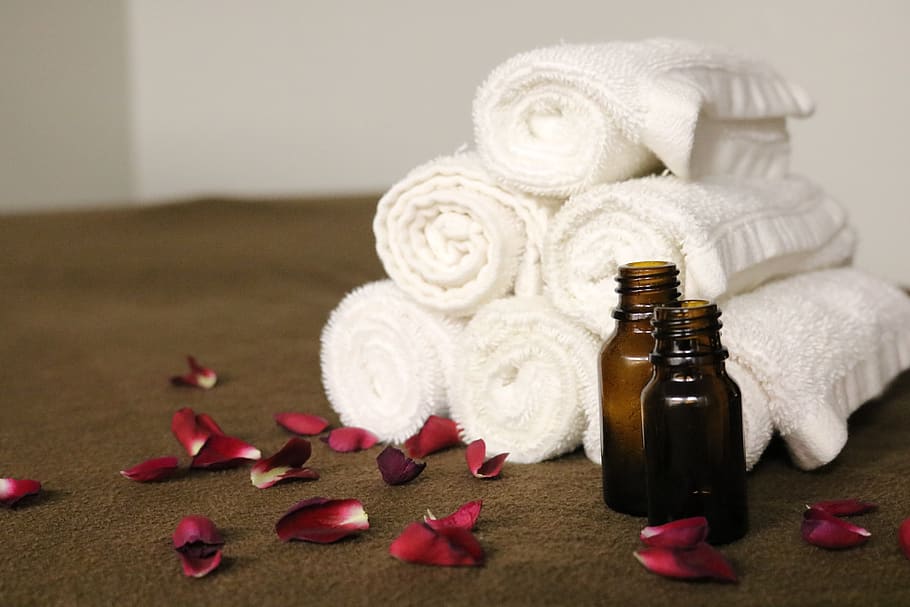Aromatherapy, which employs natural scents to help treat the mind, body, and soul, is a powerful tool in Ayurveda. Ayurvedic aromatherapy is a discipline that promotes healing and harmony by using essential oils produced from plants.
An Ayurvedic aromatherapy bath is a simple and effective way to include essential oils’ therapeutic powers into your daily self-care practice. Relaxation, pain relief, and better skin health may all be obtained by soaking in a warm bath infused with essential oils. Taking a few additional measures to establish a peaceful atmosphere and practice mindfulness during your bath may also improve the entire experience and deepen the therapeutic benefits.
Ayurvedic Aromatherapy Bath Benefits:
Taking an aromatherapy bath has several advantages, including:
- Relaxation: Essential oils have relaxing characteristics and may help to relax both the mind and body. Taking an aromatherapy bath may help ease tension and anxiety, resulting in better sleep and general well-being.
- Skin Health: Several essential oils contain antibacterial and anti-inflammatory qualities that may benefit skin health. These oils may help to soothe dry or irritated skin, decrease inflammation, and promote healing when added to bathwater.
- Pain Relief: Analgesic characteristics of essential oils imply that they may help alleviate pain and suffering. An aromatherapy bath might be particularly beneficial for those who have muscular or joint discomfort.
- Improves Respiratory Health: Some essential oils, such as eucalyptus and peppermint, may help to open up the airways and enhance respiratory health. Breathing in these oils while taking an aromatherapy bath may be very beneficial for those who have asthma, allergies, or other respiratory disorders.
- Boosts Immune System: The antibacterial, antifungal, and antiviral characteristics of several essential oils may assist in enhancing the immune system and preventing sickness.
- Reduces Inflammation: Essential oils with anti-inflammatory characteristics, such as ginger and frankincense, may help to decrease inflammation in the body. This is particularly beneficial for those who suffer from chronic pain or autoimmune illnesses.
- Improves Mood: Aromatherapy has been demonstrated to improve mood and emotional well-being. Some essential oils, such as lavender and bergamot, may help alleviate anxiety and depression while also promoting a sense of serenity.
- Promotes Digestion: Essential oils like peppermint and ginger may improve digestion and lessen indigestion and bloating symptoms.
- Reduces Headaches: Aromatherapy may help reduce the frequency and severity of headaches. Essential oils like peppermint and lavender may be particularly beneficial in this regard.
- Promotes Restful Sleep: Aromatherapy may be a useful technique for supporting peaceful sleep. Some essential oils, such as lavender and chamomile, may assist in relaxing the mind and body.
- Menstrual Cramp Relief: Essential oils such as clary sage and ylang-ylang may be beneficial in alleviating period cramps and other PMS symptoms.
- Enhances Memory and Concentration: Certain essential oils, such as rosemary and lemon, have been found to boost cognitive function, memory, and attention.
- Gives a Feeling of Luxury: Having an aromatherapy bath may be a wonderful and indulgent experience that helps you unwind from the stresses of everyday life and refocus on your inner well-being. This is especially important for those who have hectic or stressful lives.
How to Take an Ayurvedic Aromatherapy Bath:
Step 1: Choose your essential oils
The first step in performing an Ayurvedic aromatherapy bath is to choose your essential oils. Choose two to three essential oils, depending on your unique requirements or preferences. Lavender, chamomile, and ylang-ylang are popular essential oils for relaxation, while peppermint and eucalyptus are popular pain relievers.
Step 2: Dilute your essential oils
Once you have chosen your essential oils, it is important to dilute them before adding them to your bathwater. Mix 5–10 drops of each essential oil in a carrier oil, such as jojoba or almond oil. This will help the oils distribute throughout the bathwater and avoid skin irritation.
Step 3: Run Your Bath
Fill your bathtub with warm water, making sure the temperature is comfortable for you. Add the diluted essential oils to the flowing water and swirl it around to disperse the oils evenly.
Step 4: Soak in the bath
Once your bath is ready, it’s time to soak in the therapeutic water. Let the essential oils do their magic for at least 20 minutes. Take deep breaths and allow yourself to relax completely.
Step 5: Rinse with Cold Water
After your bath to close your pores and avoid skin irritation. To seal in moisture, pat yourself dry with a soft towel and apply a moisturizer. It’s also a good idea to have a glass of water after your bath to stay hydrated.
Other Suggestions for Making the Most of Your Ayurvedic Aromatherapy Bath Include:
- To maximize the relaxing advantages of your bath, make your bathroom tranquil. You may use candles, soothing music, or dim the lights.
- Natural bath products, such as bath salts or bubble baths, should be used instead of synthetic goods to prevent exposing your skin to harsh chemicals.
- Cultivate mindfulness by focusing on your breath or reciting a peaceful mantra throughout your bath. This might help enhance the relaxing effects of your bath.
Taking an Ayurvedic aromatherapy bath is a simple and effective way to include essential oil therapeutic powers into your daily routine. Whether you want to relax, ease painful muscles, or enhance the health of your skin, an aromatherapy bath may help. You may create a pleasant and therapeutic experience that will leave you feeling refreshed and invigorated by following the procedures suggested in this article.
Adding an Ayurvedic aromatherapy bath to your regimen does not have to be difficult or time-consuming. You may create a sumptuous and therapeutic experience that will leave you feeling refreshed and invigorated with only a few drops of essential oils and a bit of preparation. So why not give it a go and discover how the power of aromatherapy may improve your bathing experience while also promoting general wellness?




Good information. Lucky me I discovered your site by accident
(stumbleupon). I’ve bookmarked it for later!